
All categories
Featured selections
Trade Assurance
Buyer Central
Help Center
Get the app
Become a supplier

(4308 products available)




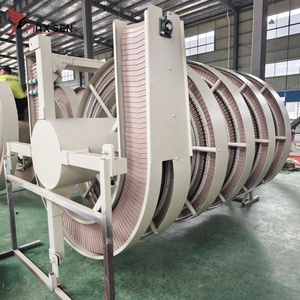
















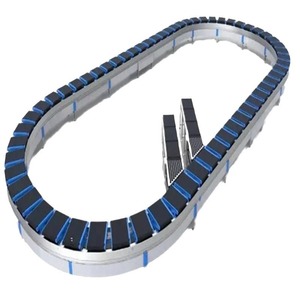



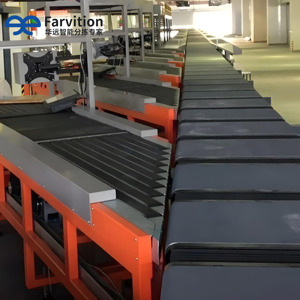
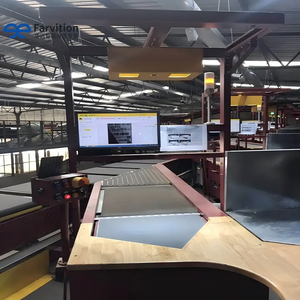















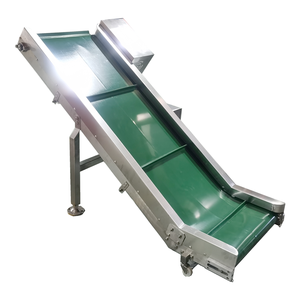


Vertical conveyor systems are used to transport materials where horizontal movement is not possible. Some types of vertical systems include:
This system carries the products using a continuous belt. It allows the materials to be transported without stopping. Such a feature is important to enable quick processing. This type of vertical system is good for light to medium loads.
As the name suggests, a spiral conveyor system is designed in a spiral shape. This system provides a compact solution for vertical movement. It uses less space while providing a continuous flow of materials. This type is mainly used in packaging and food industries.
The is primarily used in very high transfer point applications. It features sections that move materials in an incremental manner. Such an action allows the materials to be dropped off at specific points on the conveyor.
This type of conveyor is meant for dumping materials vertically. It has a belt that twists and allows the materials to be dumped out at the top. This conveyor is highly useful when large bulk materials need to be unloaded quickly in industries such as mining, agriculture, and waste management.
This type features a slanted belt that helps in moving materials from one level to another. It is used for transporting bulk materials in and between industries such as mining, agriculture, and building construction.
One should consider these factors to choose a suitable vertical conveyor system for the intended environment. These factors include:
It is vital to assess the working environment of the intended space. Certain vertical conveyor systems are made for certain conditions. For example, spiral conveyors are good for cold storage because they do not require a lot of space. Jar conveyors can withstand very high temperatures. It is also important to consider the moisture level. This is to avoid possible risks of damage or rusting.
A good vertical conveyor system should have heightened speed and efficiency to improve productivity within a space. Systems with higher speeds will be able to transport a greater amount of material within a given time. Those that have automated controls tend to be more efficient in their operation. It is also to note that these systems produce lower noise levels when compared to others.
The cost of the vertical conveyor system will be highly impacted by what materials and features the system contains. Advanced features come with a high price. However, they are more beneficial because they enhance productivity. Smaller vertical conveyor systems are cheaper. However, larger ones come with a more costly price.
This needs to be considered when choosing the type of vertical conveyor system to purchase. It will affect the long-term cost of operation. Some systems are designed to be more energy efficient than others. For example, spiral conveyors are more energy efficient compared to other vertical conveying systems.
Before purchasing a vertical conveyor, it is important to assess how much load it can carry. Different vertical conveyors are suitable for different load sizes. For example, continuous vertical systems are good for light to medium loads. Jar hi lo conveyors can carry very heavy loads.
Vertical conveyor systems are used in several industries. They increase productivity by automating the process of materials handling. Here are some industry applications:
They use spiral and bucket elevators for transporting packaged goods, grains, and bulk food materials. They work well because they gently transport food products. It reduces damage to food items.
Vertical conveyor systems are used in warehouse racking systems to optimize storage space. They increase efficiency in order picking. Jar conveyors are used to transport boxes, pallets, and other packaged goods vertically.
In manufacturing industries, vertical conveyors transport raw materials, components, and finished products. Incline belt conveyors are commonly used in manufacturing for the movement of materials from one production stage to another.
In the mining industry, vertical conveyor systems move large bulk materials such as ores, minerals, and aggregates. Jar hi lo conveyors are ideal for handling the extremely heavy loads found in mining operations.
Vertical conveyorsare used to move boxes, bottles, and other containers from one level to another in the packaging process. Spiral and incline belt conveyors are often used in this industry to transport materials horizontally.
This industry uses vertical carriers for transporting powders, granules, andbulk materials used in drug manufacturing. They also serve to move finished products in cartons, bottles, and blister packs.
Vertical conveyor systems come with many important specifications and features. They determine how well they will perform their duties. Here are some of them:
They include the key measurements and features of the vertical conveyor system. They include load capacity, speed, and height. Common load capacity ranges are between 1 to 10 tons. However, some high-capacity models can support more than 10 tons of loads. The speed range is usually between 10 to 30 meters per minute. The effective height range of a typical vertical conveyor is 5 to 15 meters. However, manufacturers can customize them at will. Commonly, belt width ranges from 300 to 1200 mm.
Vertical conveyors are designed to work for a very long time. Even when in use with heavy materials. They are made from strong and durable materials such as steel. These materials are not easily damaged by vibrations, heavy loads, or even extreme temperatures. For example, the jar hi lo conveyor system is made with a durable manganese steel elastomeric composite material that can withstand up to 400 degrees MSH or 400C.
The modular design of vertical conveyors systems makes them easy to install, maintain, and expand. The design allows for the quick replacement of parts. This reduces downtime when the system needs maintenance. The modular design also allows for the customization of vertical conveyors to meet specific requirements.
Vertical conveyor systems have important safety measures designed to keep them from being damaged. They include sensors, emergency stops, and guards. These safety measures ensure that operators do not get injured during the operation of the conveyor system. There is also a protective cover made on the vertical conveyor that prevents items from falling off the conveyor system.
Regularly cleaning the conveyor, lubricating the moving parts, and inspecting the wear and tear of the parts will help maintain a vertical conveyor system.
One of the biggest advantages is that they make space utilization possible. They transport the materials vertically and thus save floor space. They also improve the production speed and efficiency of operations.
Vertical conveyors efficiently transport materials compared to manual work. They reduce labor costs and increase productivity by moving materials automatically. Many vertical conveyor systems are designed to be energy efficient as well.
No, vertical conveyors are not noisy during their operation. The noise level will depend on the environment and type of materials being conveyed. However, they are quieter than other material-handling equipment when operating.
One should assess the vertical system's load capacity, speed, energy efficiency, and maintenance requirements. They should also consider the working environment, noise level, and the materials that will be handled by the conveyor system.